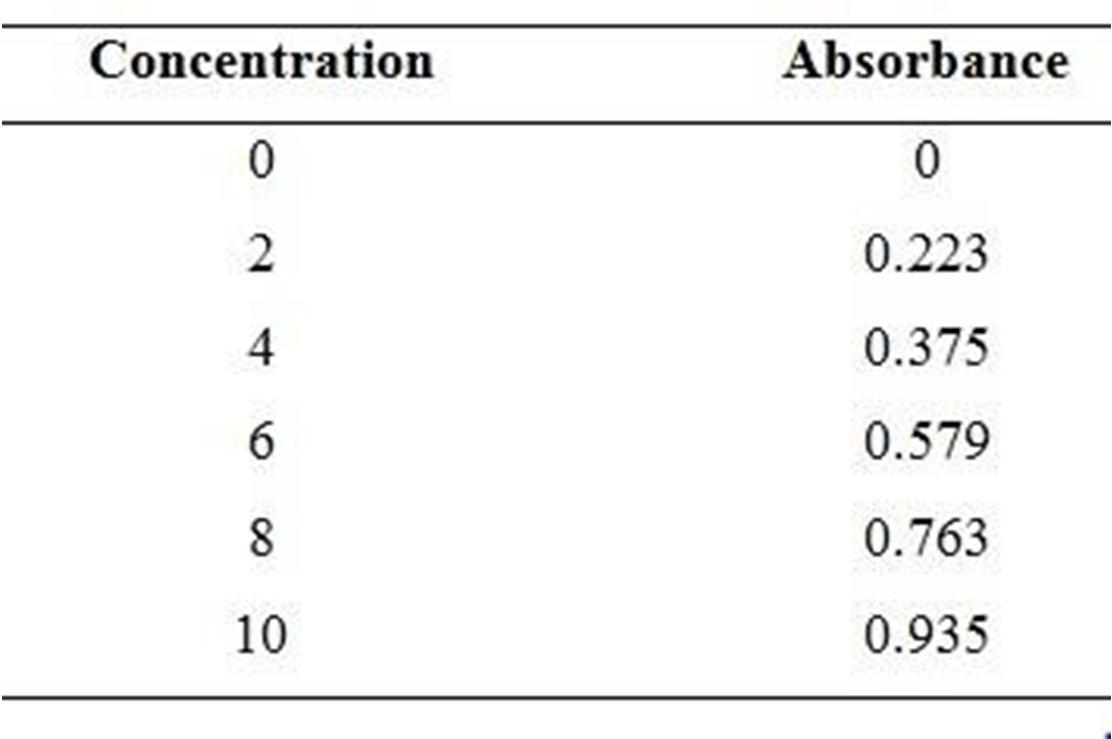https://doi.org/10.22214/ijraset.2023.50220

ISSN: 2321-9653; IC Value: 45.98; SJ Impact Factor: 7.538

Volume 11 Issue IV Apr 2023- Available at www.ijraset.com

https://doi.org/10.22214/ijraset.2023.50220

ISSN: 2321-9653; IC Value: 45.98; SJ Impact Factor: 7.538

Volume 11 Issue IV Apr 2023- Available at www.ijraset.com
Abstract: Multiple emulsion is novel approach of drug delivery system for enhancement of bioavailability and pharmacological activity. It is important to prevent the problem of oral drugdelivery system and they are stabilized by using of combination of hydrophilic and lipophilic surfactant. The specific ratio of surfactant concentration is responsible for maintaining the stability of multiple emulsions, the importance of this study was to prepare multiple emulsion of Diclofenac sodium by using two step emulsification process, by using the non-ionic surfactant units. In multiple emulsion, the stability of multiple emulsion was evaluated, percententrapment efficiency as well as in vitro studies are conducted. The objective of this study was to prepare multiple emulsion of Valsartan by two step emulsification using different nonionic surfactants, Tweens & Spans, and evaluate for stability,percentage drug entrapment, in vitro drug release.
An emulsion can be defined ascolloid consisting of two or more non-homogenous typeof liquids wherein one of the liquid contains the dispersion of the different form of liquids. Emulsions are the mixtures of two or more type of liquids where, one is such as droplets, of tiny or even ultramicroscopic size, which are distributed throughout each other. These are usually formed from the component of liquids either in natural form or, more often, using mechanisms such as the agitation, which is provided that these fluids mixed have no kind of mutual solubility.Emulsions are said to be stabilized by some agents forming films at the surface of droplets or those which impart to them a kind of mechanical stability. The stable emulsions are destroyed by destroying or by deactivating the emulsifying agent for example by the addition of appropriate third party substances or even by theprocess of freezing or by heating. Emulsions basically consist of a dispersion of two liquids that are immiscible with eachother. One of the liquids act as the dispersion medium and the other will act as the dispersed phase. In simple words, emulsions are colloids in which both the dispersed phase and dispersion medium are liquids. Oil and the mixtures of water are theemulsions when are shaken together. Multiple emulsions are complex polydispersed systems where both oil in water and water in oil emulsion exists simultaneously which are stabilized bylipophillic and hydrophilic surfactants respectively. The ratio of these surfactantsisimportant in achieving stable multiple emulsions. Among water- in-oil-in-water (w/o/w) and oil-in- water-in-oil (o/w/o) type multiple emulsions, the former has wider areas of application and hence are studied ingreat detail. Formulation, preparation techniques and in vitro characterizationmethods for multiple emulsions are reviewed. Various factors affecting the stability of multiple emulsions and the stabilization approaches with specific reference to w/o/w type multiple emulsions are discussed in detail. Favorabledrug release mechanisms and/or rate along with in vivo fate of multiple emulsions make them a versatile carrier. It finds wide range of applications in controlled or sustained drug delivery, targeted delivery, taste masking, bioavailability enhancement, enzyme immobilization, etc. Multiple emulsionshave also been employed as intermediate step in the microencapsulationprocess and are the systems of increasing interest for the oral delivery of hydrophilic drugs, which are unstable in gastrointestinal tract like proteins and peptides. With the advancement in techniques for preparation, stabilization and rheological characterization of multiple emulsions, it will be able to provideanovelcarrier systemfor drugs, cosmetics andpharmaceuticalagents.In this review, emphasis is laid down on formulation, stabilization techniquesand potential applications of multiple emulsion system.
Diclofenac is a nonsteroidal anti-inflammatory drug (NSAID). Thismedicine works by reducing substances in the body that cause pain and inflammation. Diclofenac is used to treat mild to moderate pain, or signs and symptoms of osteoarthritisor rheumatoid arthritis. Voltaren is also indicated for the treatment of ankylosing spondylitis. The Cataflam brand of this medicine is also used to treat menstrual cramps. Diclofenac powder (Cambia) is used to treat a migraine headache attack. Cambia will onlytreat a headache that has alreadybegun. It will not preventheadaches or reduce thenumber of attacks.

ISSN: 2321-9653; IC Value: 45.98; SJ Impact Factor: 7.538

Volume 11 Issue IV Apr 2023- Available at www.ijraset.com
Paraffin, also known as liquid paraffin, paraffin oil or kerosene, is a combustible hydrocarbon liquid that’s burned as a fuel. Paraffin fuel refers to a mixture of different types of hydrocarbons with the chemical formula CnH2n+2; specifically paraffins are a group of alkanes.
Paraffins are key components of petroleum and natural gas. Those with fewer than 5 carbon atoms per molecule tend to be gases at room temperature, whereas those with between 5 and 15 carbon atoms are usually fluid in form. Straight-chain varieties with over 15 carbon atoms per molecule are solid at room temperature. Paraffin is less hazardous than gasoline and boils at 150-275oC. It can be extracted fromcoal, wood and oil shale, but is mostly acquired from the distillation of petroleum.
Polysorbate 80 is a nonionic surfactant and emulsifier often used in pharmaceuticals, foods, and cosmetics. This synthetic compound is a viscous, water-soluble yellow liquid.
Polysorbate 20 (common commercial brand names include Kolliphor PS 20,[2] Scattics, Alkest TW 20, Tween 20, and Kotilen-20) is a polysorbate-type nonionic surfactant formed by the ethoxylation of sorbitan monolaurate. Its stability and relative nontoxicity allows it to be used as a detergent and emulsifier in a number of domestic, scientific, andpharmacological applications. As the name implies the ethoxylation process leaves the molecule with 20 repeat units of polyethylene glycol; in practice these are distributed.
Multiple emulsion is prepared by two step emulsification process
1) Primary Emulsification: 20ml ofdistilled water containing 28mg ofdrug was graduallyadded to 40ml of oil phase (Paraffin oil) containing primary emulsifier (Span 80 (con. 10%) and 56mg of drug with continuous stirring at 5000r/min for 15min. (Using Mechanical Stirrer and High Pressure Homogenizer (HPH) having continuous stirring). (Total Quantity of Primary emulsion is 60ml)
2) Secondary Emulsification: 60ml previously prepared viscous primary emulsion was emulsified further with an external aqueous phase (water (40ml)) containing secondary emulsifier (Tween 20 (con. 10%)) and 140mg drug with continuous stirring at 5000r/min for 30min. (Using Mechanical Stirrer and High Pressure Homogenizer (HPH)having continuous stirring). After continuous stirring to form homogenous or uniform W/O/W type of Multiple Emulsion (Total quantity of Multiple Emulsion is 100ml).
The melting point of Diclofenac sodium is determined by Conventional and DigitalMethod and melting point of Diclofenac sodium is reported in Table 1.
B.
Log P Value is determined by Partition Coefficient Phenomenon and Log P Value ofDiclofenac sodium is reported in Table 1.
The solubility of Diclofenac sodium in given solution. (Water, pH 1.2 acidic buffer,pH 6.8 phosphate buffer, pH 7.4 phosphate buffer) is reported in Table 2 and concentration of drug soluble in different solution is shown in Figure

The calibration curve of Diclofenac sodium is determined by using U.V. Spectroscopic method. In which the absorbance of Diclofenac sodium in differentconcentration (0, 2, 4, 6, 8, 10, and 12) is reported in Table 3. And the calibrationcurve is shown in Figure
The % entrapment efficiency is important for determination % content of activeingredient. The percentage entrapment efficiency (% ee) was determined by taking freshlypreparedW/O/W MultipleEmulsionsandimmediatelycentrifuged at 4000rpmfor 10min.

ISSN: 2321-9653; IC Value: 45.98; SJ Impact Factor: 7.538
Volume 11 Issue IV Apr 2023- Available at www.ijraset.com
Then 1ml of the aqueous phase (the lower layer) was precisely withdrawn through 2ml hypodermic syringe and diluted properly with phosphate buffer 6.8. The solution was filtered through a millipore filter (0.22mm in pore size) and drug contentwas analysed on UV spectrophotometer at 275nm. The Encapsulation Efficiency was determined by following equation:
% EE = (Total drug incorporated – Free Drug) / Total drug * 100
The Entrapment Efficiency of Multiple Emulsion is reported in Table 7.

Globule size or Particle Size
The particle size globules of Multiple Emulsion is reported in Table 7, the peak of sizedistribution report is shown in Figure 5. (By using Zeta Analyser Apparatus)
The standard range of globule size is between 0.25 to 25 µm
In Vitro Release Studies: The in vitro release of multiple emulsion, in which the standard calibration curve of Diclofenac in phosphate pH 6.8 is reported in Table 5 and shown in Figure 6. The in vitro release of Diclofenac sodium Multiple emulsion is reported in Table 6 and shown in Figure 7. The in vitro release study is reported.
The Objective of present work is to formulation and evaluation of multipleemulation of diclofenac sodium. The globule size of the emulsion is according to standard size and appearance of emulsion is good. This emulsion is useful aches and pains, as well as problems with joints, muscles and bones. These include: rheumatoid arthritis and osteoarthritis sprains and strains in muscles and ligaments, back pain toothache, migraine, gout , ankylosing spondylitis.



ISSN: 2321-9653; IC Value: 45.98; SJ Impact Factor: 7.538
Volume 11 Issue IV Apr 2023- Available at www.ijraset.com


ISSN: 2321-9653; IC Value: 45.98; SJ Impact Factor: 7.538
Volume 11 Issue IV Apr 2023- Available at www.ijraset.com
Multiple Emulsion is prepared by two step emulsification method in which firststep under formation of pre-emulsion (W/O) and second step under treatment ofaqueous water phase emulsified with previously prepared W/O emulsion to formW/O/W type of multiple emulsion. Using different W/O emulsions for the second emulsification step the finest W/O emulsion lead to W/O/W emulsions with the highest encapsulation rate. To prevent a production-induced reductionof encapsulation rate the inner water droplets have to be much smaller than the oil droplets in the Multiple Emulsion. Diclofenac sodium is in the inner water phase of a multiple Emulsion. Due to the same reason Diclofenac sodium is unsuitable as marker substance, if the inner W/O emulsion.

[1] Vyas S. P. And Khar R. K., Targeted and Controlled Drug Delivery System, 1st Edition, 2002, CBS Publication; 303-329.
[2] Omotosho JA, Florence AT, and Whateley T L. (1990). Absorption and lymphatic uptake of 5-flourouracil in the rat following oral administration of w/o/w multiple emulsions. Int J Pharm: Vol. 61, 51-56.
[3] Florence AT., Whitehill D. (1982). The formulation and stability of multiple emulsions. Int J Pharm: Vol. 11, 277 - 308.
[4] Jain N. K., Controlled and Novel Drug Delivery, 1st Edition 2001, CBS Publication; 381-399.
[5] Matsumoto S, Kita Y, Yonezawa D. (1976). An attempt of preparing water-in- oilin-water multiple phase emulsions. J Colloid Interface Sci: Vol. 57, 353- 361.
[6] Cunha AS, Cheron M, Grossiord JL, Puisieux F and Seiller M. (1998). W/O/W multiple emulsions of insulin containing a protease inhibitor and an absorption enhancer: biological activity after oral administration to normal and diabetic rats. Int J Pharm: Vol. 169, 33-44.
[7] Yazan Y and Puisieux F. (1993). Multiple emulsions. Boll Chim Fharmaceutico: Vol. 132, 187–196.
[8] De Luca M, Rocha-Filho P, Grossiord JL, Rabaron A, Vaution C, Seiller M. (1991). Les emulsions multiples, Int J Cosmet Sci: Vo.\l. 13, 1-21.
[9] Raynal S, Grossiord JL, Seiller M, Clausse DA. Topical W/O/W multiple emulsion containing several active substances: formulation, characterization and study of release. J Controlled Release: Vol. 26, 129-140.
[10] Jong-wook Ha And Seung-man Yang., Breakup Of A Multiple Emulsion Drop In A Uniform Electric Field., Journal Of Colloid And Interface Science 213, 92–100 (1999).
[11] Jim Jiao and Diane J. Burgess., Rheology and Stability of Water-in-Oil-in- Water Multiple Emulsions Containing Span 80 and Tween 20., AAPS Pharm Sci 2003; 5 (1) 252-259
[12] Abraham Aserin., Multiple Emulsions Technology And Applications, Wiley- interscience, A John Wiley & Sons, 2007, Inc., Publication; 111-324
[13] Akhtar N, Yazan Y. Turkish J. Pharm. Sci., 2005; 2: 173.
[14] Jim, J David GR, DianeJB. J. Coll. Interf. Sci., 2002; 250: 444.
[15] Sinha VR, Kumar A. Indian J. Pharm. Sci., 2002; 64: 191.
[16] Lynda MS, Wayne HR. ―Protein Delivery Physical Systems‖, Amazon.com.1997; 208.
[17] Kochi HO, Nakano M. Chem. Pharm. Bull., 1996; 44: 180.
[18] Omotosho JA, Florence AT, Whateley TL. Int. J. Pharm., 1990; 61: 51.
[19] Nisisako T. Chem. Engin. Tech., 2008; 31: 1091.
[20] Asuman B, Ongun MS. ―Multiple Emulsions‖, John Wiley and Sons, Inc, eu:Wiley.com., 2008; 293-306.
